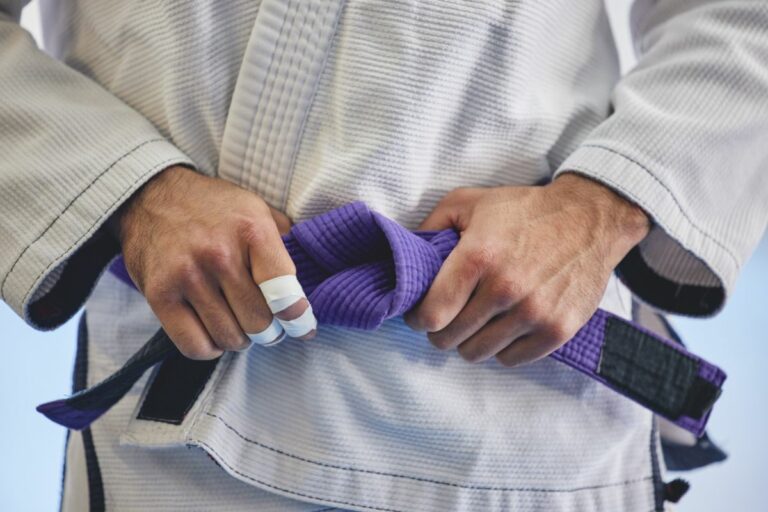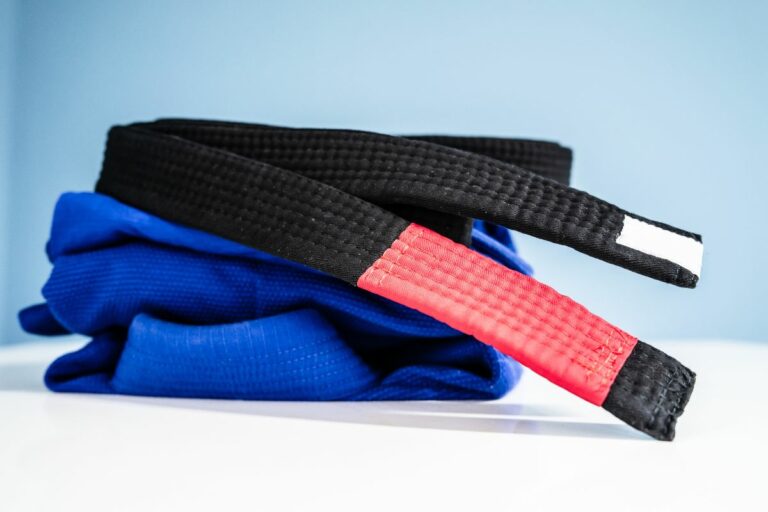Blood Chokes: How Do They Work?
Have you ever watched an MMA fight and wondered how an opponent can fall unconscious so quickly after a chokehold? Do you ever wonder if it’s safe or not?
If you’ve noticed the above, you’re likely to have witnessed a blood choke. This is a chokehold that cuts off the blood supply to the brain, which leads to unconsciousness in only a few seconds.

It is also perfectly safe if done correctly, the opponent just needs to make sure they release the chokehold the second their opponent becomes unconscious.
This kind of chokehold is the most common one you’ll come across in BJJ or MMA, and this article is going to go discuss how they work, how you can do them, and how you can defend yourself against this kind of chokehold.
Why Does A Blood Choke Make Someone Fall Unconscious?
As mentioned above, a blood choke is all about cutting the blood supply to the brain. Along the neck, on each side, there are two carotid arteries, and these carry blood to the brain, providing it with oxygen.
If these arteries become blocked, the brain can’t receive oxygen and will end up shutting down. Therefore, the trick to a blood choke is to hold both of these arteries for long enough until the person falls unconscious.
However, it is crucial for the person performing the chokehold, to notice when their opponent has fallen unconscious, as prolonged choking of this area can lead to serious health problems.
Once the person has lost consciousness and the arteries are open again, blood flow can continue to make its way up to the brain and the person will regain consciousness.
What Does A Blood Choke Feel Like?
A blood choke can look scary from the outside, but as we’ve said, as long as it’s done properly, there’s nothing to worry about.
If you’re being held in a blood choke, you are likely to begin to feel lightheaded – this means your brain is beginning to lose oxygen, and you’re going to lose consciousness very soon.
When you pass out, you may not even notice what has happened until you wake up, just like when you fall asleep at night.
On regaining consciousness, you may feel a bit confused, but after a few moments, you’ll be able to get back to the fight as long as you aren’t hurt.
Blood Chokes Vs Air Chokes
Blood chokes are the most common chokes to perform as they are easier to muster, don’t cause pain, and are non-threatening if done correctly.
However, another type of choke is the air choke. Rather than preventing oxygen from reaching the brain through the carotid arteries, the air choke cuts the oxygen through the windpipe. This is done by applying force directly to the throat.
These chokes are more painful than the blood chokes as you are applying pressure to the throat, and have a lot more risks involved, such as causing damage to the windpipe.
You’ll often see fighters tapping out before falling unconscious to this chokehold because of the pain, but some stick it out.
It also takes longer to lose consciousness from an air choke than a blood choke, which is another reason why you’ll often see fighters tapping out before fainting.
How Long Does It Take To Lose Consciousness From A Choke Hold?

The time it takes for someone to lose consciousness from a chokehold will depend on the kind of chokehold it is, and how it is executed – a black belt may be able to knock someone out in just a few seconds, rather than someone who isn’t as strong.
As we mentioned earlier, it takes longer to lose consciousness from an air choke, and as these are more painful, fighters are very likely to tap out before passing out.
A blood choke, on the other hand, can be very quick. If the hold is perfectly executed and held tight enough, the opponent can lose consciousness right away.
However, if the person performing it isn’t too strong, it can take longer. It is advised that you hold the choke tightly for ten seconds, which should do the trick (unless they lose consciousness before then).
Does It Take Long To Recover From A Blood Choke?
As long as the person performing the choke releases their opponent straight after they lose consciousness, the person who has passed out will wake up relatively quickly.
This should happen around 10 to 20 seconds after losing consciousness, and they are unlikely to remember ever passing out.
Their brain will simply ‘reboot’ once blood flow and oxygen get moving again, and there should not be any damaging side effects. They may just be a little confused when they first come to.
How To Perform A Choke Hold
As we’ve mentioned, there are several types of chokeholds. The Rear Naked chokehold is one of the best when it comes to fighting on the ground.
Begin by getting behind your opponent and wrapping your right arm (if right-handed) around their neck, with your hand of this arm resting on your left arm, on the bicep.
With your left arm, you are then to reach to the back of their head, pushing it down, while your right forearm pulls up into their neck.
To perform the blood choke, you must ensure you are pushing their head forward and to the side with your forearm on the side of their neck while you squeeze.
The Arm Triangle choke is also an effective carotid artery choke.
Simply place, your strongest arm beneath the neck of your opponent and take hold of your wrist with your other hand and squeeze. With this hold, your shoulder and bicep should work together in order to cut off the blood supply.
How To Defend Yourself Against Choke Holds
As you know, in order to perform a blood choke, your opponent needs access to the sides of your neck in order to block your carotid arteries.
Therefore, making sure at least one side of your neck has space between their body and yours, is a way to defend yourself.
Fighting off their arms is a good way to do this, as in trying to break the lock they have on the chokehold, or loosening their grip on you to give your neck some space.
Turning your body is also a good way to defend yourself. If your attacker has you in a hold, try and find a moment where they falter and turn your body as best you can in another direction.
This will mean they will lose the hold they have on your neck, so you can break free from the hold.
Are Blood Chokes Safe?
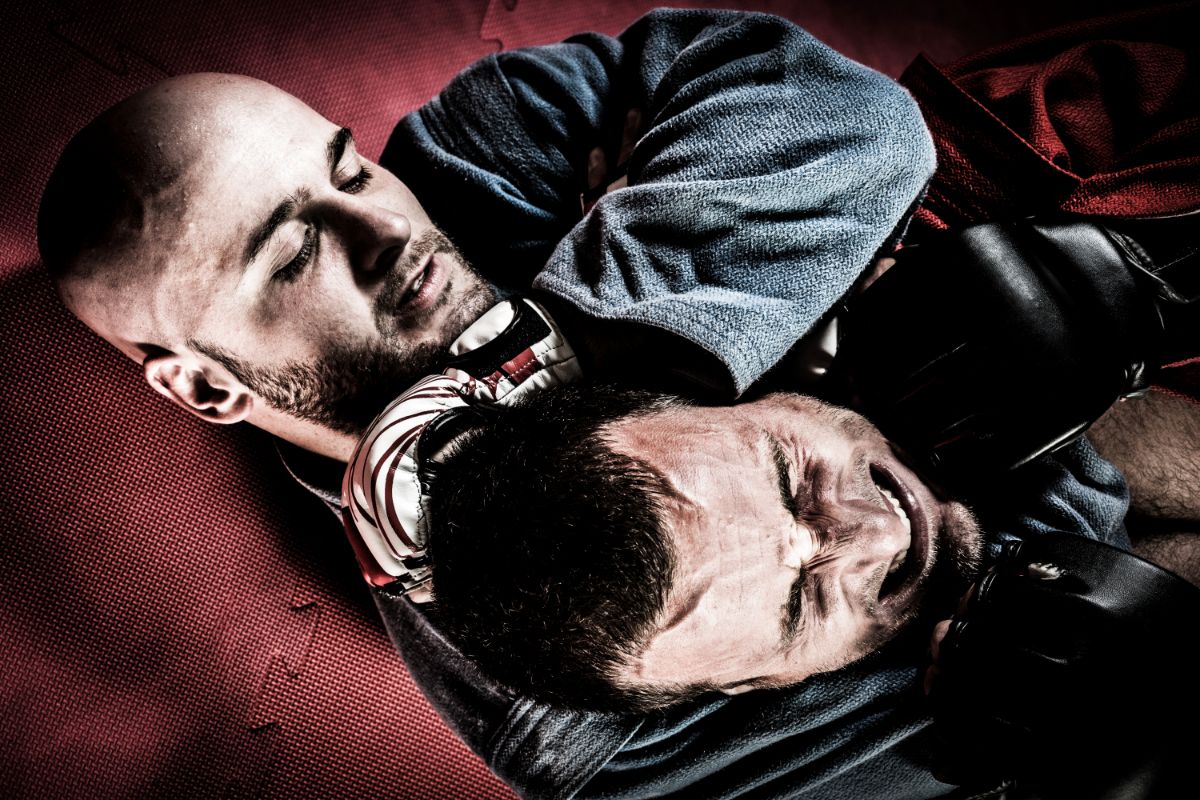
As we’ve mentioned in this article already, blood chokes are safe if done in the correct way.
When learning to perform blood chokes, this is usually done in a supervised gym, so learning in a safe environment will lead to the performance of safe blood chokes throughout the sport.
The chokehold must be released right after the person loses consciousness. When released, blood flow will make its way back to the brain, and the person will regain consciousness without any side effects.
However, if a chokehold is held for too long after they’ve lost consciousness, then this can cause serious damage.
If the brain goes too long without oxygen, then brain damage can occur, and eventually even death.
Another danger can also be the person who has fallen unconscious, hitting themselves on something hard or sharp. The choke may not have caused harm, but hitting your head on something hard when unconscious can be quite damaging.
Therefore, performing these kinds of chokeholds in a safe, and supervised environment is the best way to limit any damage caused to the person.
Final Thoughts
While blood chokes look and sound scary, they are perfectly safe if performed in the correct manner, and in a safe and supervised environment.
The good thing about blood chokes is that they can be performed on opponents that are much larger than you, as all you need to do is muster the technique of blocking the carotid arteries.
If done correctly and with the right amount of pressure, your opponent can hit the ground in a number of seconds.
However, as has been mentioned in this article, you must ensure that you are releasing the chokehold straight after your opponent has lost consciousness. This will ensure that no damage has been done to them, and they will wake up in a number of seconds.
During an official fight, the referee will notice when an opponent has lost consciousness and will blow his whistle to let the other opponent know that he must release his hold.
Frequently Asked Questions
How Long Is Too Long For A Blood Choke?
If done correctly, a blood choke can lead to unconsciousness in around 10 to 20 seconds. Injury and issues can be caused if you hold this chokehold for more than 20 seconds.
Experts believe that permanent damage can be caused if the brain is left without oxygen for four minutes or longer.
What Injuries Can Holding A Choke For An Extended Period Of Time Cause?
Holding a choke for an extended period of time makes the victim subject to strangulation.
There are several physical repercussions associated with this, such as a stroke, seizures, paralysis, miscarriage, speech issues, and other long-term injuries.
What Martial Art Uses Chokes?
Chokes are often used in several martial arts that involve grappling, which refers to taking hold and seizing your opponent. These include Judo and Brazilian Jiu-Jitsu.
Are You Able To Breathe During A Blood Choke?
You are still able to breathe during a blood choke, as the pressure is on the sides of your neck on your carotid arteries, not your windpipe.
How Long Does It Take To Wake Up From A Chokehold?
As long as the person is released from the chokehold once they lose consciousness, they are likely to wake up within 10 to 20 seconds.
Once the brain begins to receive blood and oxygen again, it will cause a sort of ‘restart’, and the person will regain consciousness.
How Long Can You Go Unconscious Without Brain Damage?
If oxygen deprivation is occurring, you are likely to lose consciousness between 30 and 180 seconds of no oxygen. If one full minute goes by with no oxygen, then brain cells may begin to die.
If someone goes three minutes without oxygen, then neurons could experience more damage, with more serious brain damage becoming more likely.
If a person goes 5 minutes without oxygen, then death becomes likely.
What Is A Guillotine Choke?
Named after the torture device, a guillotine choke involves placing the victim’s head beneath your armpit, and their forearm under their own neck.
This puts pressure on the carotid arteries, and when performed in a fight, this is likely to make the opponent tap out.


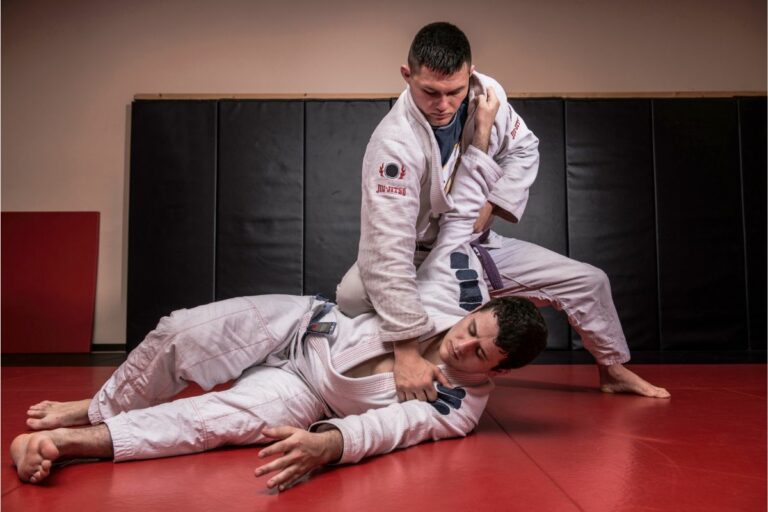

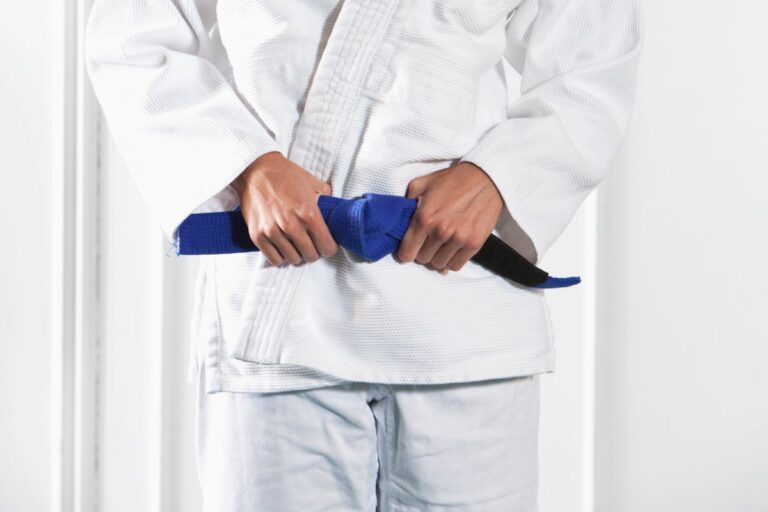
![[EXPLAINED] What Is Jiu-Jitsu? | The Best Martial Art](https://mmaboxx.com/wp-content/uploads/2022/06/EXPLAINED-What-Is-Jiu-Jitsu-768x512.jpg)
